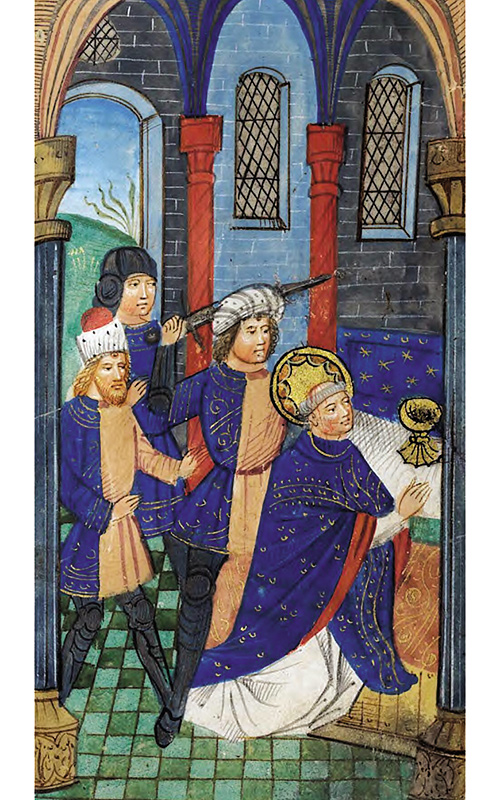
Depiction of the murder of Thomas Becket, ca. 1390, in the De Grey Hours (National Library of Wales)
On Dec. 20, 1170, the most notorious murder of the Middle Ages took place in Canterbury Cathedral: Archbishop Thomas Becket was killed by four knights of King Henry II, who had (apocryphally) spurred them to act by exclaiming in exasperation, “Who will rid me of this troublesome priest?”
What was so troublesome about Thomas Becket? Historian Jennifer Paxton explores how the archbishop fell afoul of his king for both personal and political reasons and ignited a political dispute that convulsed church and state for almost a decade, and why Becket’s violent death turned him from a lightning rod for controversy into the most important saint in Europe.
Becket had taken his ecclesiastical office as the hand-picked candidate of Henry, who thought he would help him restrict the legal privileges of the church. Becket instead became a fierce champion of the rights of the see of Canterbury, and the former friends became deadly enemies. Becket’s death had many unintended consequences, including the preservation of certain legal privileges for the church (“benefit of clergy”) and establishment of an English royal presence in Ireland. The cult of Becket the Martyr spread throughout Europe and led to the creation of the most famous pilgrimage in English literary history: Chaucer’s Canterbury Tales.
Although Becket’s shrine was destroyed during the British Reformation, his story lives on in a 1959 drama by French playwright Jean Anouilh (the basis of a well-known film starring Richard Burton and Peter O’Toole), who used Becket’s resistance to the king as an analogy for the French resistance to Nazi occupation.
Paxton is clinical associate professor in the department of history, associate dean of undergraduate studies, and director of the university honors program at The Catholic University of America.
General Information